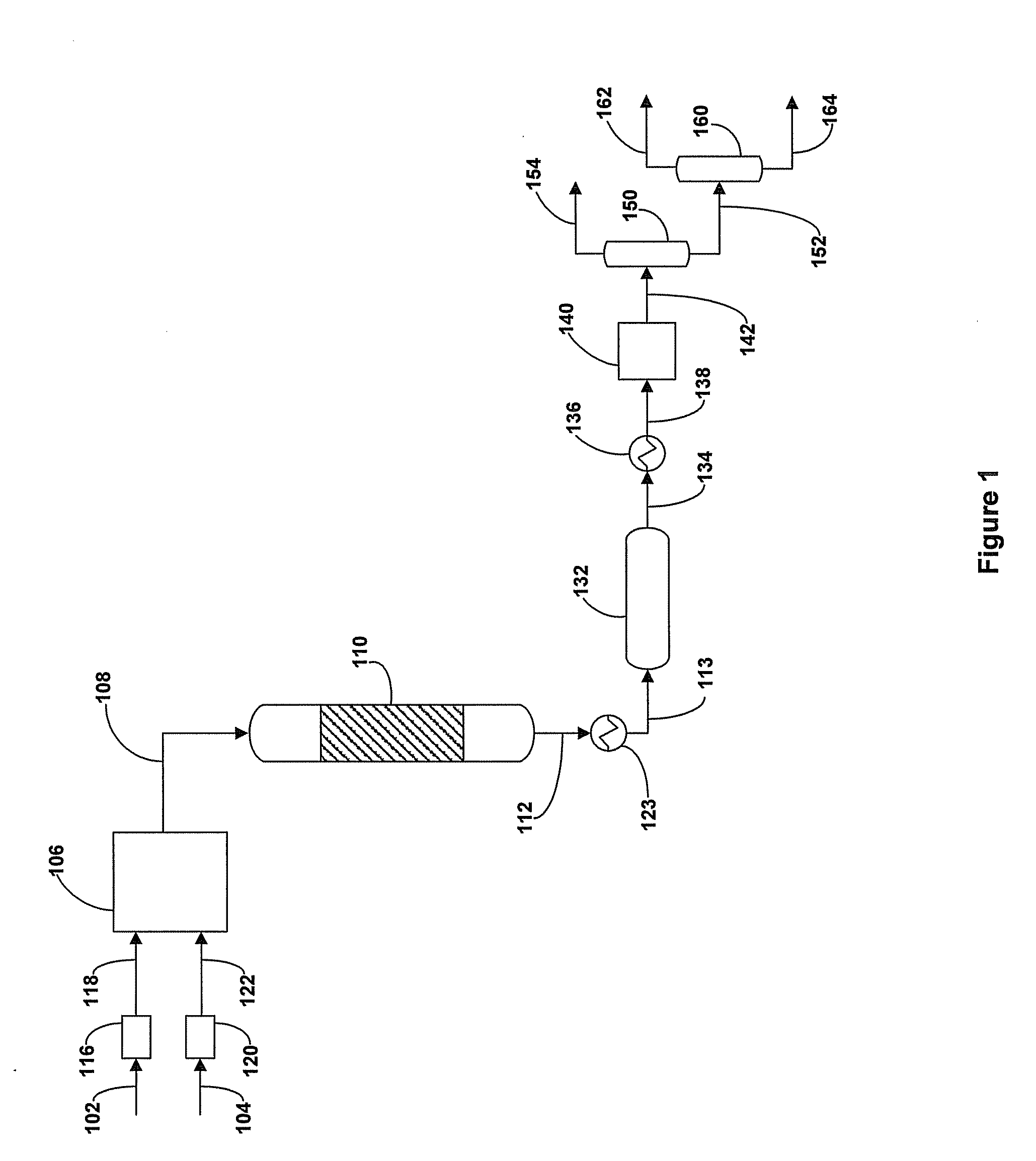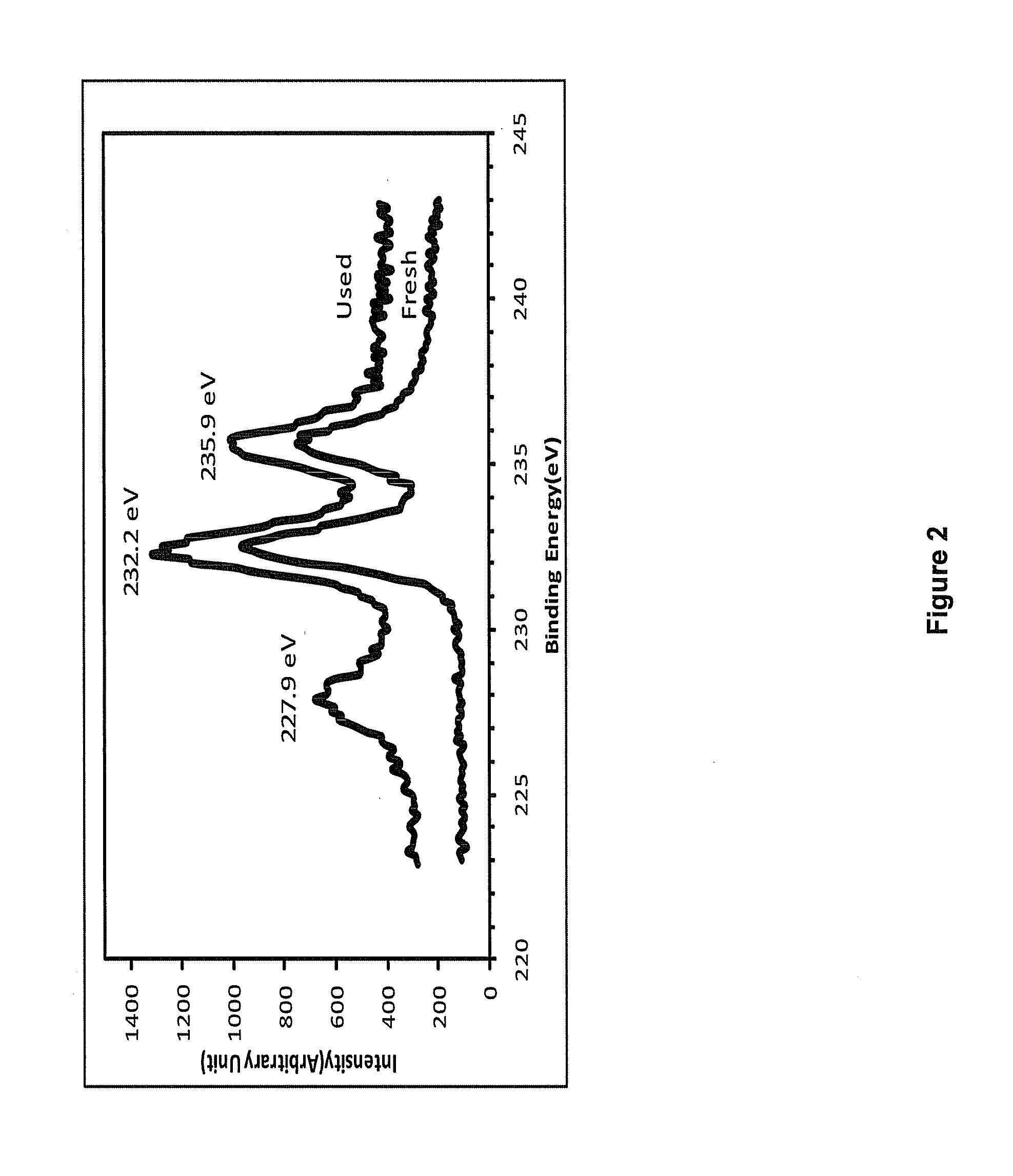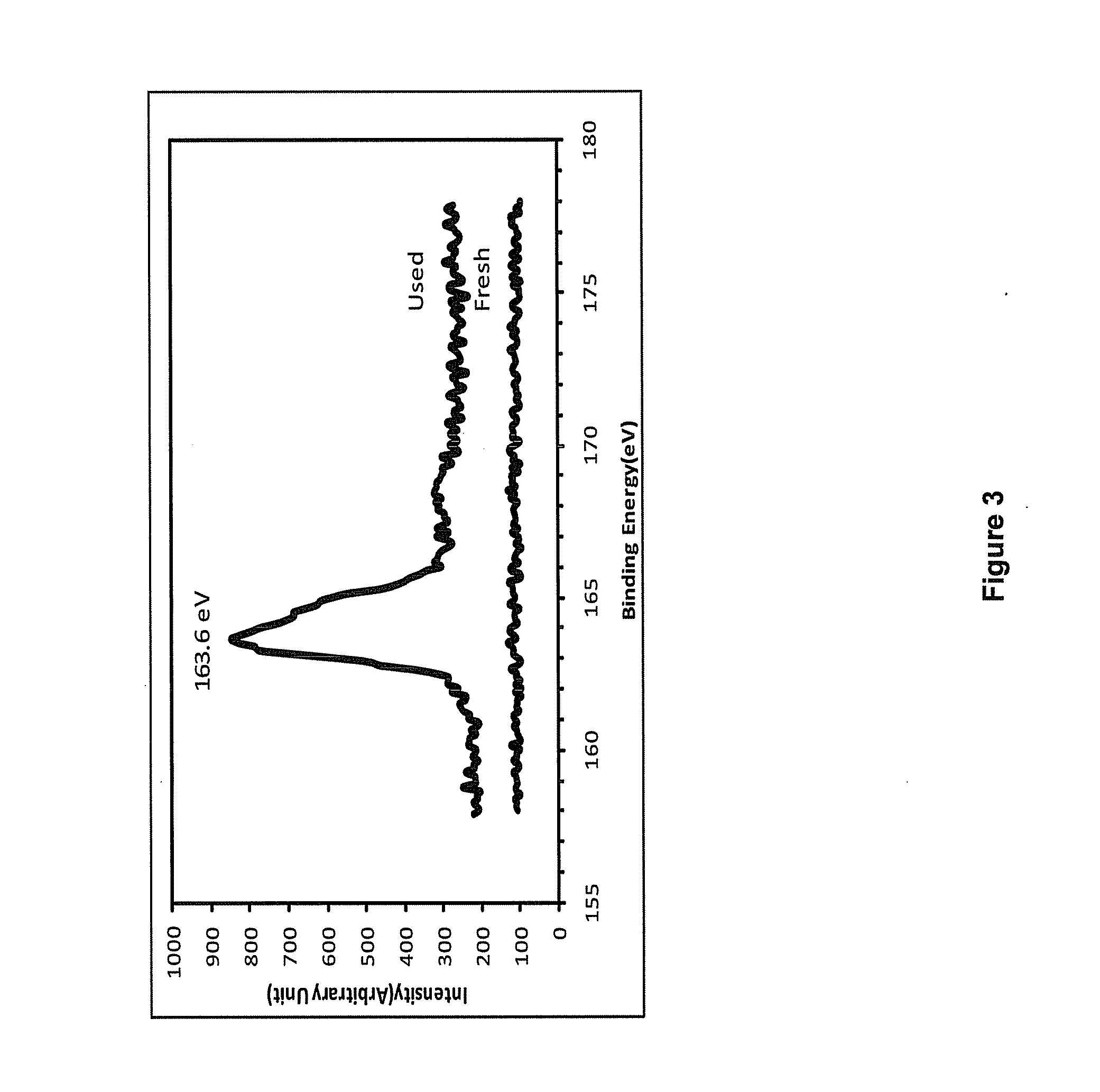Petroleum Upgrading and Desulfurizing Process
a technology of petroleum feedstock and desulfurization process, which is applied in the direction of hydrocarbon oil cracking process, hydrocarbon oil treatment products, physical/chemical process catalysts, etc., can solve the problems of increasing the cost associated with upgrading the hydrocarbon feedstock, and affecting the quality of petroleum feedstock
- Summary
- Abstract
- Description
- Claims
- Application Information
AI Technical Summary
Benefits of technology
Problems solved by technology
Method used
Image
Examples
example 1
[0069]Whole range Arabian Heavy crude oil and deionized water were pressurized to a pressure of about 25 MPa utilizing separate pump. The volumetric flow rates of crude oil and water, standard conditions, were about 0.29 and 0.62 mL / minute, respectively. The crude oil and water feeds were pre-heated using separate heating elements to temperatures of about 150° C. and about 450° C., respectively, and supplied to a mixing device that includes simple tee fitting. The combined crude oil and water feed stream was maintained in a hydrothermal reactor consisting of a tubing having an inner diameter of 10 mm and a length of 4 m at about 450° C. for a residence time of about 2.2 minutes. The hydrothermal reactor product stream was cooled with a chiller to produce a cooled product stream, having a temperature of approximately 60° C. The cooled product stream was depressurized by a back pressure regulator to atmospheric pressure. The cooled product stream was separated into gas, oil and water ...
example 2
[0070]Whole range Arabian Heavy crude oil and deionized water were pressurized with pumps to a pressure of about 25 MPa. The volumetric flow rates of the crude oil and water at standard condition were about 0.29 and 0.6 ml / minute, respectively. The petroleum and water streams were preheated using separate heaters, such that the crude oil had a temperature of about 150° C. and the water had a temperature of about 450° C., and were supplied to a combining device, which was a simple tee fitting, to produce a combined petroleum and water feed stream having a pre-reactor temperature of about 360° C. The combined petroleum and water feed stream was supplied to a hydrothermal reactor having an inner diameter of 10 mm and a length of 7.5 m where it is maintained at a temperature of about 450° C. for a residence time of about 4.1 minutes. A first product stream was removed from the hydrothermal reactor and cooled with a chiller to produce cooled first product stream, having a temperature of ...
example 3
[0071]Whole range Arabian Heavy crude oil and deionized water was pressurized to a pressure of about 25 MPa utilizing separate pump. The volumetric flow rates of crude oil and water, standard conditions, were about 0.29 and 0.62 mL / minute, respectively. The crude oil and water feeds were pre-heated using separate heating elements to temperatures of about 150° C. and about 450° C., respectively, and were supplied to a mixing device that includes simple tee fitting. The combined crude oil and water feed stream was maintained, in a hydrothermal reactor consisting of a tubing having an inner diameter of 10 mm and a length of 4 m at about 450° C. for a residence time of about 2.2 minutes. The hydrothermal reactor product stream was cooled with a chiller to produce a cooled product stream, having a temperature of approximately 60° C. The cooled product stream was depressurized by a back pressure regulator to atmospheric pressure. The cooled product stream was separated into gas, oil and w...
PUM
| Property | Measurement | Unit |
|---|---|---|
| temperature | aaaaa | aaaaa |
| temperature | aaaaa | aaaaa |
| pressure | aaaaa | aaaaa |
Abstract
Description
Claims
Application Information
 Login to View More
Login to View More - R&D
- Intellectual Property
- Life Sciences
- Materials
- Tech Scout
- Unparalleled Data Quality
- Higher Quality Content
- 60% Fewer Hallucinations
Browse by: Latest US Patents, China's latest patents, Technical Efficacy Thesaurus, Application Domain, Technology Topic, Popular Technical Reports.
© 2025 PatSnap. All rights reserved.Legal|Privacy policy|Modern Slavery Act Transparency Statement|Sitemap|About US| Contact US: help@patsnap.com



